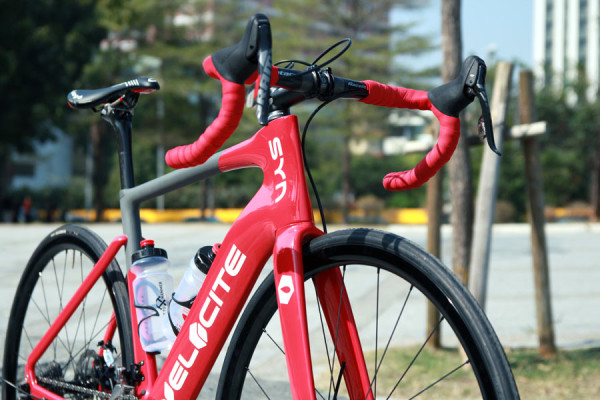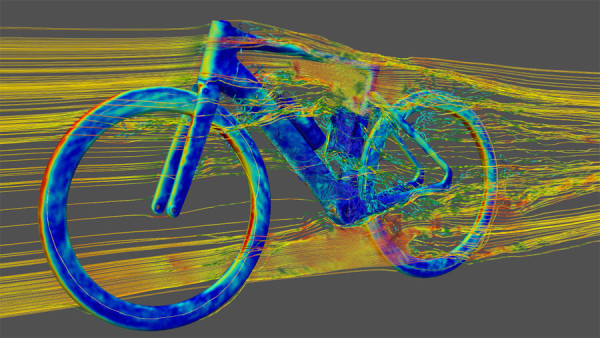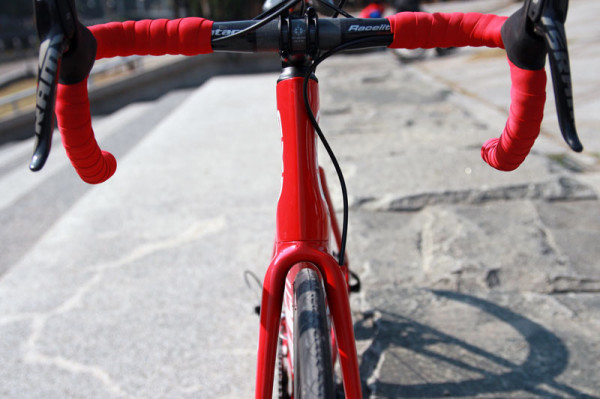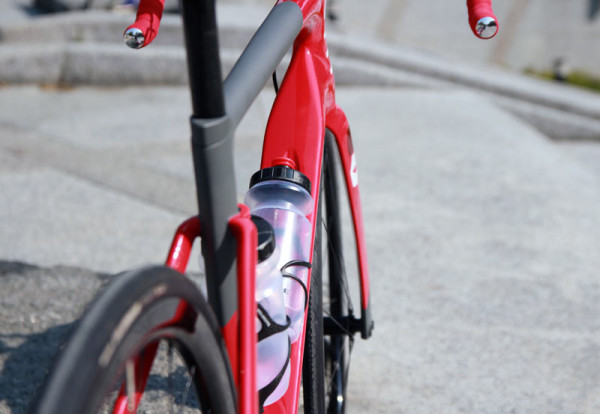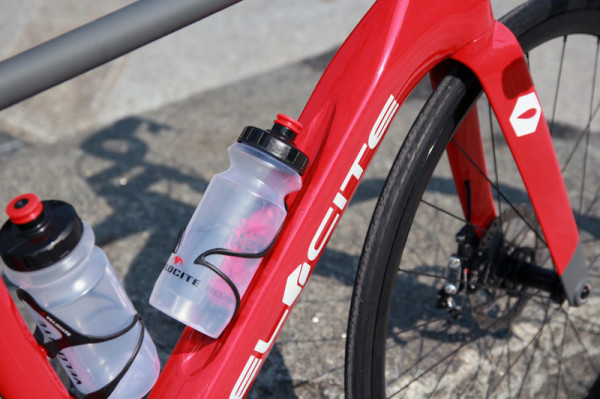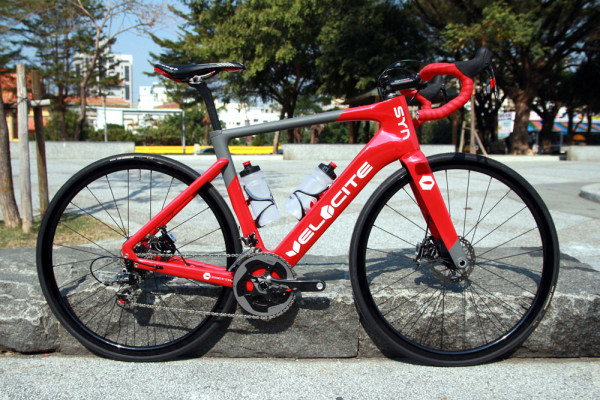Held back from the press until the patent work was done, the new Velocite Syn aero road bike aims to leave current designs in the dust by focusing its aerodynamics on the complete bike and accoutrements we all take with us…namely, water bottles.
“We use the ‘real life’ adjective to differentiate from high performance in a wind tunnel or ideal test conditions.” said Victor Major, CEO and R&D Director of Velocite Tech. “For example, real life use of a road bike always involves carrying water bottles, and to date no bicycle design delivered optimal aerodynamic performance once water bottles are mounted.”
To accomplish their aero goals, the tube shapes and horizontal profiles were designed to create a complete airfoil shape with the bottles tucked into the frame. Major says the combined shape improves aerodynamics at a wide range of wind angles, thereby reducing turbulence and drag.
The design was put through the paces on their own CFD equipment, which Major said let them run an exhaustive amount of tweaks and tests to get to the final design. And while we think it looks pretty sharp, he says the design was driven entirely by performance and function, not aesthetics.
The photos shared here are of a tool testing sample, the real deal will be unveiled at the Taipei bike show in March (we’ll be there). We’ll also get the full tech run down, but the basics are that it’ll not only be very aero, but also be the stiffest aero road bike out there thanks to oversized carbon plies laid over solid mandrels.
Comfort wasn’t completely forgotten. A 27.2mm seatpost and hidden recessed clamping design with a polymer damper allows for a little extra post flex and vibration damping.
The Velocite Syn will be available in disc brake and rim caliper brake versions. The frame is mechanical and Di2 ready with full internal cable/wire routing.
